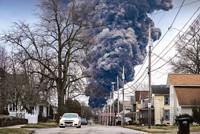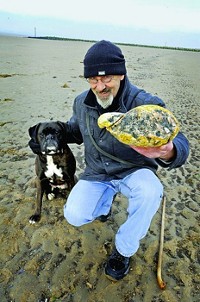Advertisement
Grab your lab coat. Let's get started
Welcome!
Welcome!
Create an account below to get 6 C&EN articles per month, receive newsletters and more - all free.
It seems this is your first time logging in online. Please enter the following information to continue.
As an ACS member you automatically get access to this site. All we need is few more details to create your reading experience.
Not you? Sign in with a different account.
Not you? Sign in with a different account.
ERROR 1
ERROR 1
ERROR 2
ERROR 2
ERROR 2
ERROR 2
ERROR 2
Password and Confirm password must match.
If you have an ACS member number, please enter it here so we can link this account to your membership. (optional)
ERROR 2
ACS values your privacy. By submitting your information, you are gaining access to C&EN and subscribing to our weekly newsletter. We use the information you provide to make your reading experience better, and we will never sell your data to third party members.
Education
Newscripts
Spill stories, stinky and sticky
by Linda Wang
May 8, 2017
| A version of this story appeared in
Volume 95, Issue 19
Ew, what’s that smell?

Newscript’s recent coverage of “poop” chemicals (C&EN, April 10, page 40) prompted retired forensic chemist Mark Maxwell, of Egg Harbor City, N.J., to share a memory of foul-smelling chemicals from his undergraduate days.
“A few years before 1965, at the University of Dubuque, in Iowa, someone placed a small bottle of cadaverine in the organic laboratory storage refrigerator,” says Maxwell, a regular correspondent to Newscripts. “Unfortunately, the bottle was not tightly sealed and when the bottle tipped over after someone slammed the door shut, the contents wound up in the bottom.”
That summer, the refrigerator lost power and the normally solid cadaverine melted. “When the power was again turned on, the cadaverine crystallized, but a lot of it also permeated the rubber seals on the door,” says Maxwell.
Even years after the spill was cleaned up, when Maxwell accidentally bumped against the door seal, he couldn’t get the stench off himself. “Wherever I went, that stuff was following me,” Maxwell says. In the cafeteria during lunch, he sat where he and his friends usually sit. But that day, nobody chose to sit with him. “Luckily I didn’t have any classes that afternoon, so I showered off, and I went through a can of Right Guard deodorant all over my body.”
Even after Maxwell graduated, that smell continued to haunt him. “When I returned for Homecoming in 1973, the refrigerator and the smell was still there,” he says. Ironically, he went on to have a 40-year career in forensic science, where foul-smelling chemicals became a part of his job.
Sticky situations
Speaking of spills, in March, a tank ruptured at a Pepsi bottling plant in Howell, Mich., releasing some 7,200 gallons of concentrated Mountain Dew syrup down a floor drain. Mixing with wastewater, the spill created a huge amount of foam, overwhelming the plant’s sewer system, according to local news reports.
The accident raised environmental concerns that the sugary substance would have had a toxic effect on aquatic life if it hadn’t been contained in a detention basin. “A spill of this magnitude is highly unusual,” Carla Davidson, senior environmental quality analyst at the Michigan Department of Environmental Quality told the Livingston Daily Press & Argus, a local newspaper.
Elsewhere in the country, a soda spill caused an American Airlines flight from Miami to Chicago to be diverted to Jacksonville, Fla. in March. A soft drink spilled onto a power outlet in the main cabin. Out of an abundance of caution, the flight made an emergency landing, according to the Florida Times-Union. All 150 passengers were unhurt, although one passenger said he was soaked.
Linda Wang wrote this week’s column. Please send comments and suggestions to newscripts@acs.org.




Join the conversation
Contact the reporter
Submit a Letter to the Editor for publication
Engage with us on Twitter